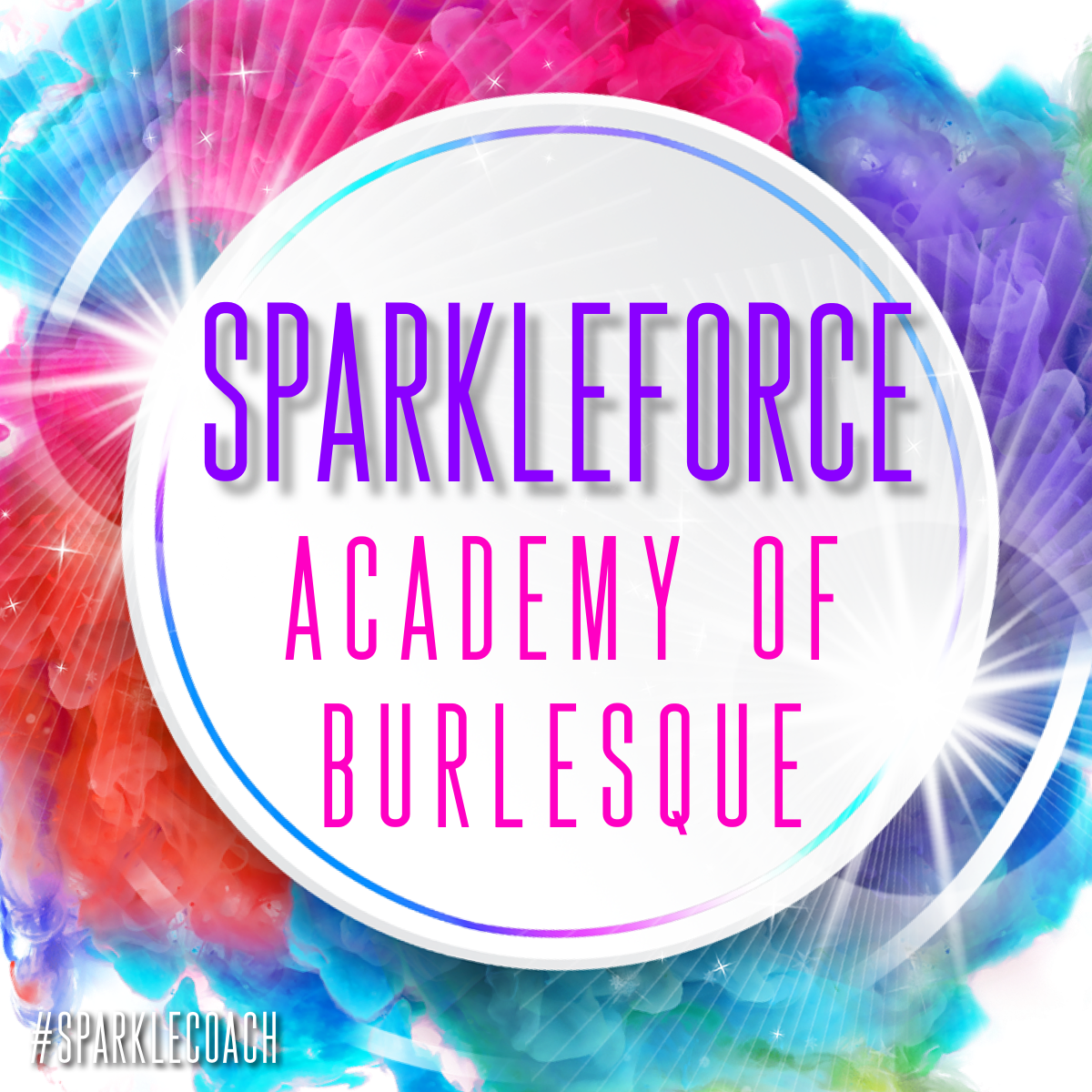Media FAQ
Welcome to the SparkleForce Academy of Burlesque media resources page. These pages offer a wealth of background information to support print, broadcast, and blogging media in crafting informed and engaging content about burlesque.
What is burlesque?
Burlesque (pronounced “bur-lesk”) is a historic art form with roots dating back to the 17th century Italian word “burlesco,” derived from “burla” meaning joke, ridicule or mockery.
While the spelling has evolved to the modern “burlesque,” the term has encompassed various related artforms like vaudeville, cabaret, and exotic dance. Alternative spellings like Burlesk has been invented in the early 1900’s to skirt censorship laws, Oh! how things havent changed in a century!
At its core, burlesque involves parody and comically exaggerated imitation, often parodying other literary, dramatic works or making comment on society. This can take the form of satirical sketches, provocative striptease or reverse striptease performances.
However, burlesque is much more than just the removal of clothing. It’s a multi-layered artform that can be sexy, funny, thought-provoking, messy, refined, and above all, an empowered female voice in a historically male-dominated world.
Whether through scandalous humor, subversive social commentary, or simply the revolutionarily confident display of the female form, burlesque allows women to reclaim agency over their sexuality, identity and self-expression.
At its essence, burlesque celebrates the audacious, uninhibited sharing of diverse female narratives and perspectives through a dangerously alluring blend of showmanship, parody and provocative sensuality.

Why is Burlesque important?
Burlesque has held profound importance historically and in modern times as a daring platform for feminine expression and empowerment:
In its earliest incarnations, burlesque provided one of the rare public stages for women’s voices and perspectives to be heard at a time when strict societal norms severely limited or outright prohibited female performers. In 17th century Britain, for example, women would dress as men to satirize culture through burlesque sketches, subverting patriarchal restrictions.
This role of burlesque as an act of resistance against patriarchal oppression continues its relevance today. In certain states, burlesque performers still risk arrest simply for baring a nipple or donning provocative costumes – yet they continue pushing boundaries. Burlesque remains a boldly unapologetic female-centric art form in a world that often seeks to control, censor or diminish women’s sexuality and self-expression.
More than just a popularised form of striptease, at its core burlesque amplifies diverse feminine narratives, identities and perspectives frequently underrepresented in male-dominated arts and culture.

Where did burlesque start?
Burlesque has a rich global history, with origins that can be traced back to various countries and eras:
In America, the roots of modern burlesque are often attributed to trailblazing performers like Sally Rand (1934), Gypsy Rose Lee (1936) . They helped popularise the art of striptease and brought burlesque into the theatrical mainstream.
However, the British connection predates the American burlesque scene. It was Lydia Thompson who first brought burlesque to American shores when she toured to New York with her “British Blondes” troupe in 1868, introducing the saucy parodies that were popular in London’s music halls.
As burlesque’s popularity grew in the early 20th century, the artform also made its way to countries like Australia and New Zealand, likely propelled by touring vaudeville and burlesque circuits emboldened after the World Wars. Pioneering Kiwi performers like Freda Stark Lenore Truscott and Margaret Austin left their mark on this downunder burlesque legacy.
While originating as a European literary parody, burlesque has transcended cultures, taking on unique local flavors from its American, British, Australian roots and finding expression even in regions like Singapore and the Middle East through daring artists.
What began as an Italian mockery has blossomed into a truly global phenomenon – an unapologetic celebration of the feminine from the theatrical stages of Vegas to the intimate cabaret backrooms around the world.

Through parody, satire and the reclamation of the body as a site of agency rather than objectification, burlesque allows women to upend institutionalised misogyny and societal policing of their bodies.
Whether providing a voice for the voiceless in repressive times or continuing to champion feminist values today, burlesque’s enduring importance lies in its ability to uplift the feminine while unflinchingly challenging patriarchal norms through radical self-expression.
As an introverted person, I never imagined I would have the courage to perform burlesque. But Crystal’s gentle encouragement and the supportive environment allowed me to step out of my comfort zone and embrace my sensual side.
The #ConfidenceSchool curriculum not only taught me captivating dance moves but also helped me develop a more positive relationship with my body.
